Deserts are much more than a bunch of sand. Read all about this amazing biome with these fun facts about deserts.
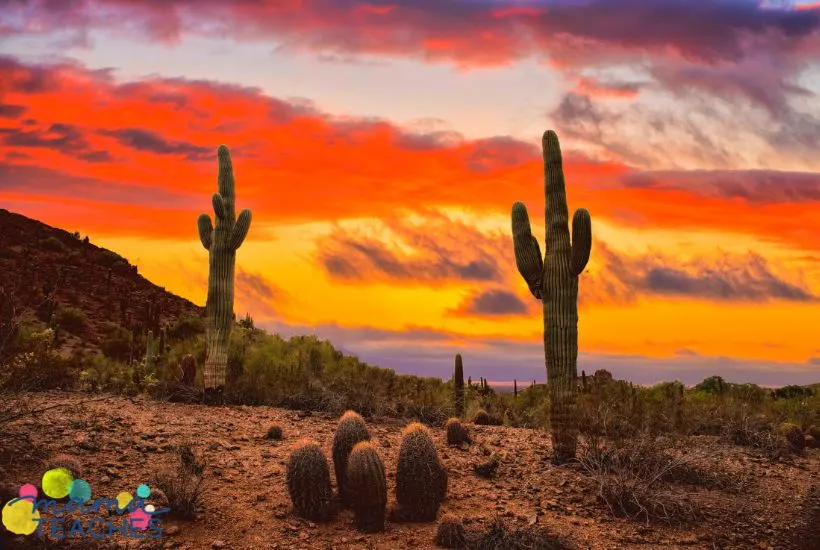
Basic Facts About Deserts
A desert is any area of land, hot or cold, that receives less than 10 inches of rainfall per year.
Many deserts are hot, like the Sahara Desert in Africa, but some are cold.
The largest desert is in Antarctica (talk about a cold desert)!
The deseEarth’se covers 1/3 of the earth’s land.
You may think it is impossible to live in a desert, but 1/6 of the people on Earth live in the desert biome.
Now that you know some basic facts about deserts, let’s move on to some fun facts about deserts.
Fun Facts About Deserts
Check out these weird and wild desert fun facts.
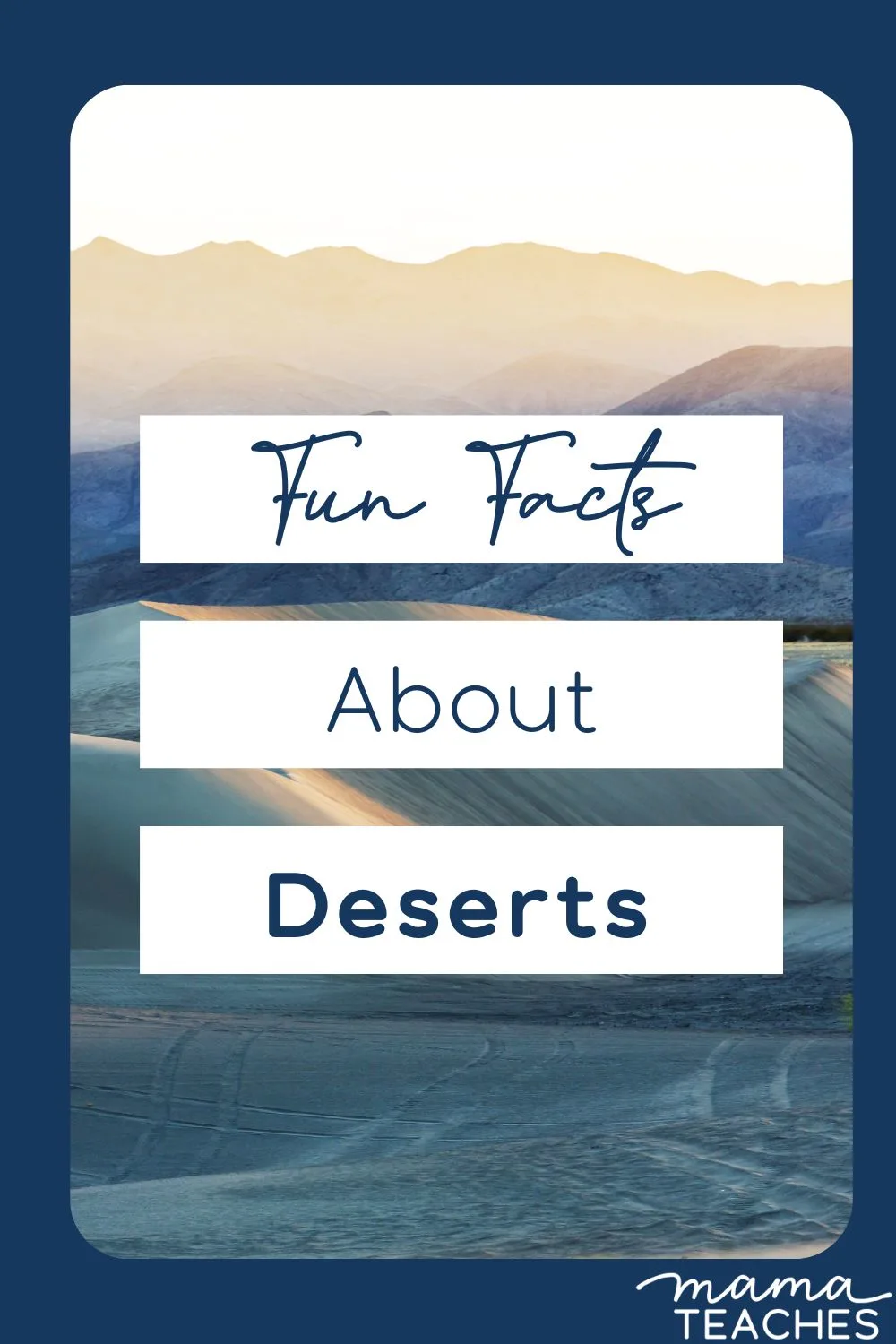
This article contains affiliate links to things that you might like.
The Desert Can Be Covered with Snow or Ice
Many people think of deserts and picture the whirling sands of the Sahara Desert in Africa.
But only 20% of deserts are covered in sand.
Some cold deserts are covered with frozen water (ice or snow) most of the year.
The weather never warms enough for the ice or snow to melt.
These areas are still deserts because they do not have much precipitation each year (they must have less than 10 inches).
One example of a cold desert in the enormous Gobi Desert in China.
It covers 450,000 square miles.
The Sahara Desert Is the Hottest Place on Earth
The Sahara Desert in Africa is famous for its ultrahot temperatures.
The average summer temperature across the whole desert is between 100 and 104 degrees Fahrenheit.
But hotspots in the desert can be an average of 110 and 1150 degrees Fahrenheit.
This is the temperature of the air; the sand is much hotter.
Ground temperatures of the Sahara can reach 167 degrees Fahrenheit.
That’s hot enough to cook a whole egg in 13 minutes!
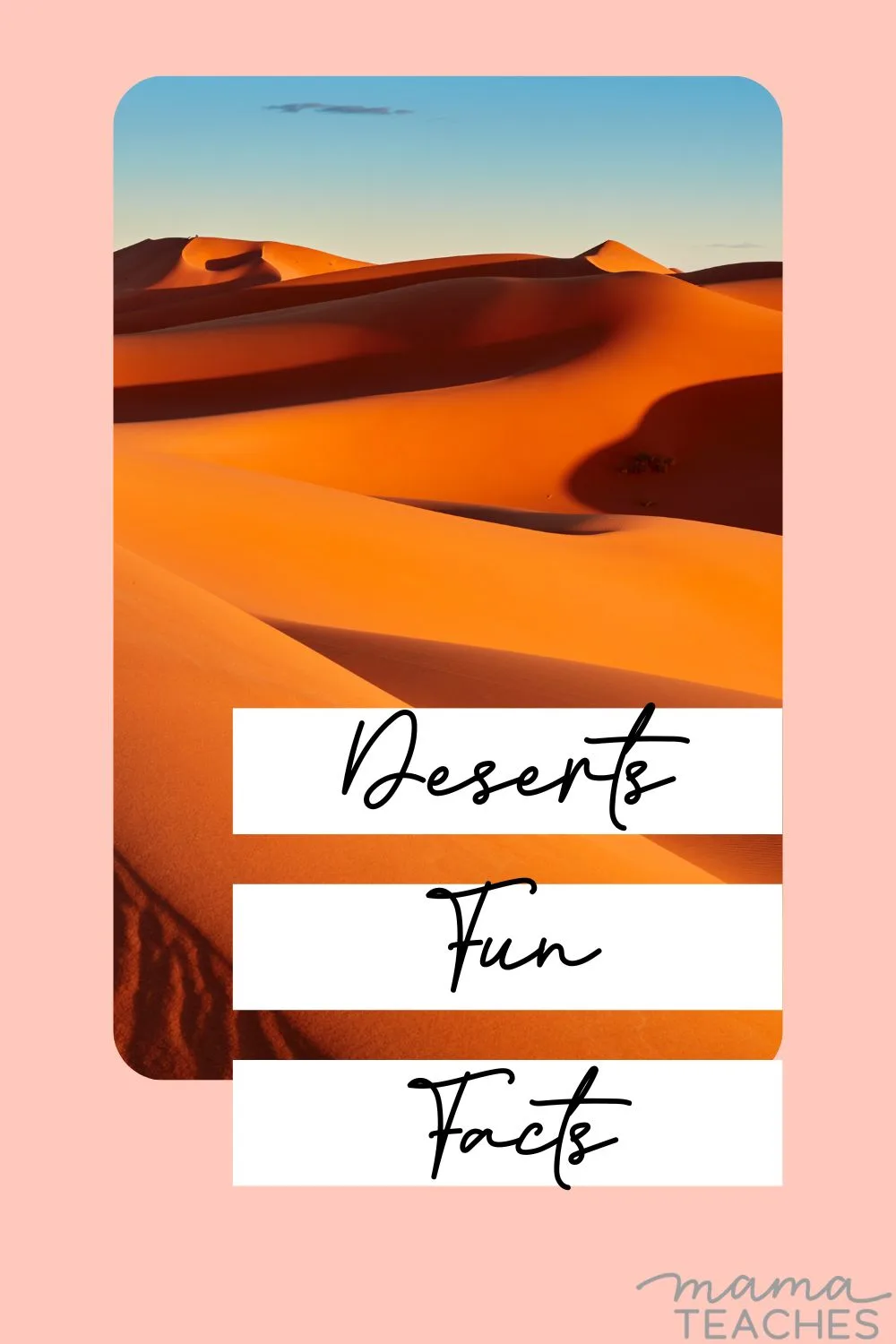
Fun Facts About Desert Animals
Deserts are not ghost towns. Many animals make their homes in deserts.
The Desert Comes Alive at Night
Temperatures in a hot desert skyrocket during the day.
The sand is scorching hot.
Because of this, many desert animals are nocturnal and emerge at night.
For example, in the Canyonlands National Park in Utah, the nocturnal animals include skunks, kangaroo rats, foxes, bats, mountain lions, and owls.
Some other animals are active at dawn and dusk.
These are called “crepuscular” animals.
The crepuscular desert animals of the Canyonlands include mule deer, coyotes, porcupines, and jack rabbits.
You’ll Never Spot the Sand Cat
The sand cat is an adorable feline predator that lives in the deserts of the Arabian Peninsula, Central Asia, and North Africa.
It looks like a small domestic cat with a wider face. It weighs between 3 and 7 pounds.
You will likely never see a sand cat for three reasons:
- They are grayish-tan and blend seamlessly with desert sands and rocks.
- They are solitary creatures who hunt only at night. During the day they rest underground.
- If you shine a light at night in the hope that its reflective eyes will give it away, the sand cat will close its eyes.
It’s the cutest desert animal you will likely never see.
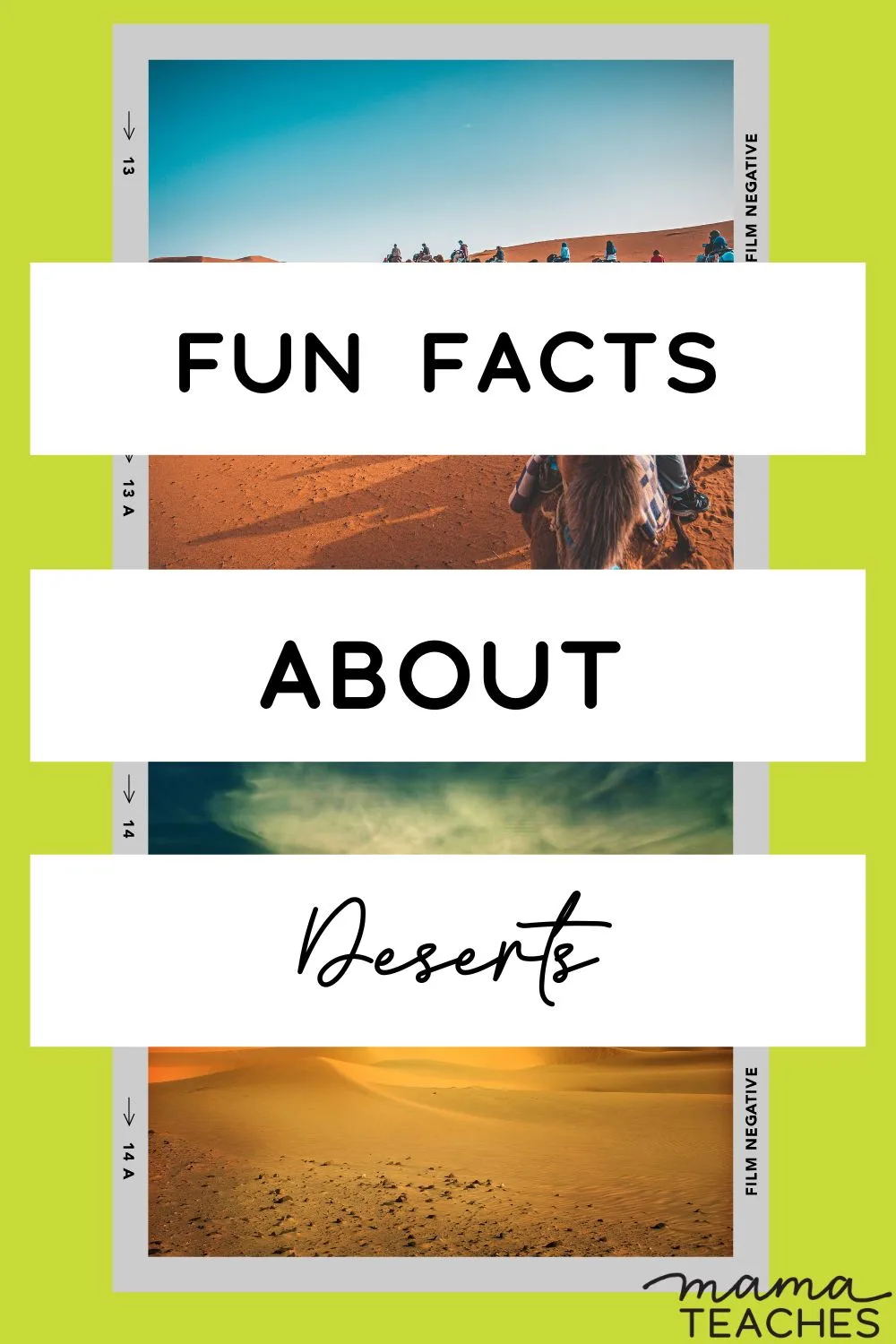
The Thorny Devil Has Two Heads
This fun fact is weird but true.
The thorny devil lizard of the Australian desert has two heads. One is a real head. The other is a fake head that sits on top of the real one.
When the thorny devil is threatened, it will lower its real head under its body and present its fake head.
If a predator (like a bird) strikes the fake head, it will not kill the thorny devil.
Thorny devils also have a strange walk. They jerk forward and back with each step; perhaps this confuses their predators.
Thorny devils are covered with sharp spikes and look quite threatening, but the creature only preys on ants.
It laps them up with its sticky tongue. It can eat 1000 ants per day.
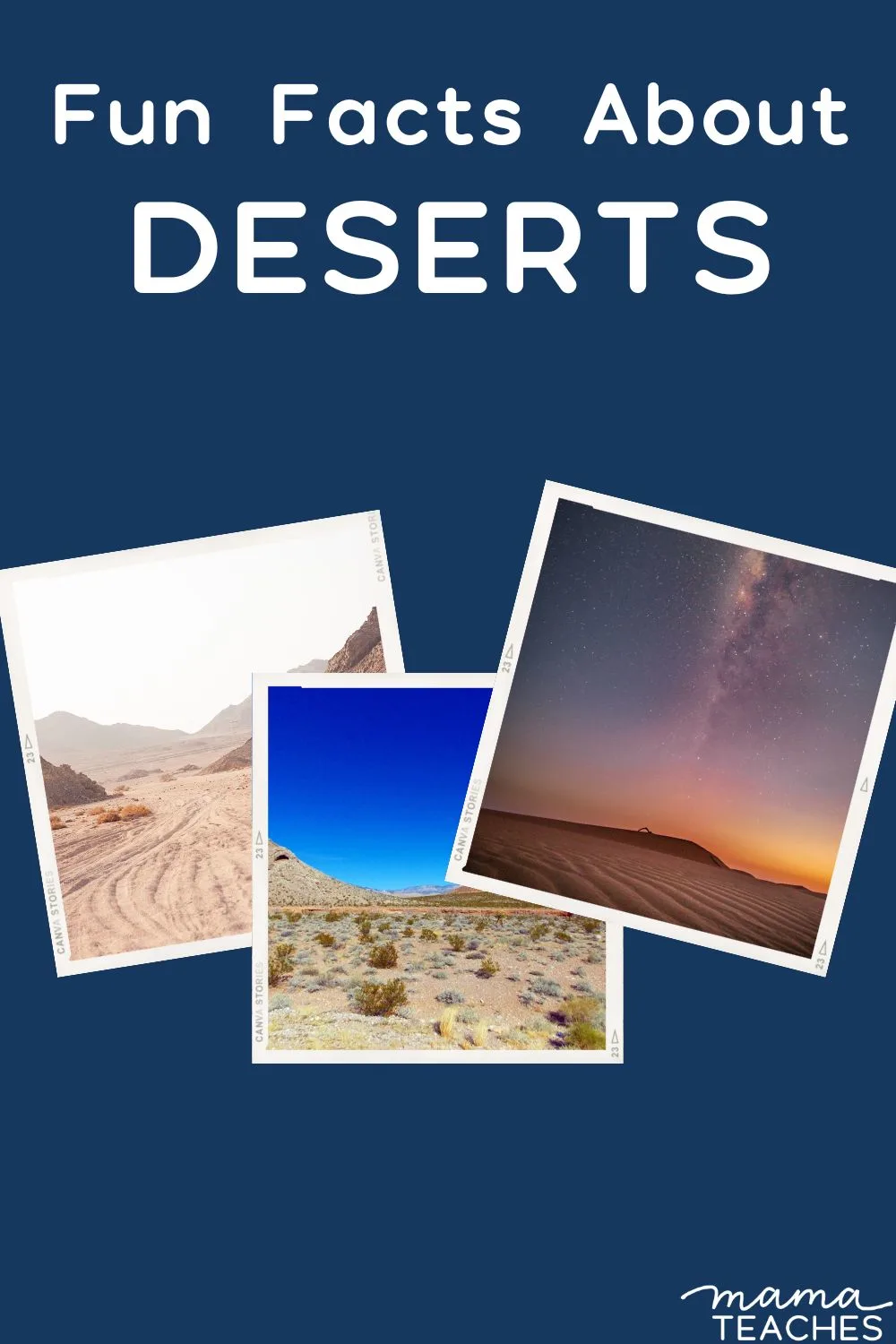
Fun Facts About Desert Plants
The desert may not have much water, but that doesn’t stop these desert plants.
They have amazing adaptations to survive and thrive in the desert biome.
Don’t Hug the Teddy Bear Cholla
The teddy bear cholla looks cute and fuzzy, but don’t be fooled.
That fuzzy appearance is due to clusters of 6-12 short spines that cover the plant.
If the spines of one plant aren’t enough to ward off hungry plant-eaters, what about a whole group of teddy bear chollas?
Teddy bear chollas grow in groups tightly packed together so no animal wants to approach them.
If you are even in the deserts of the Southwestern United States, steer clear of these plants!
The Baseball Plant Has a Surprise Inside
The baseball plant is a desert plant in South Africa.
The plant has a modified stem that is round like a baseball.
The stem is covered in spines.
Inside the baseball-shaped stem, the plant stores water to survive during dry years.
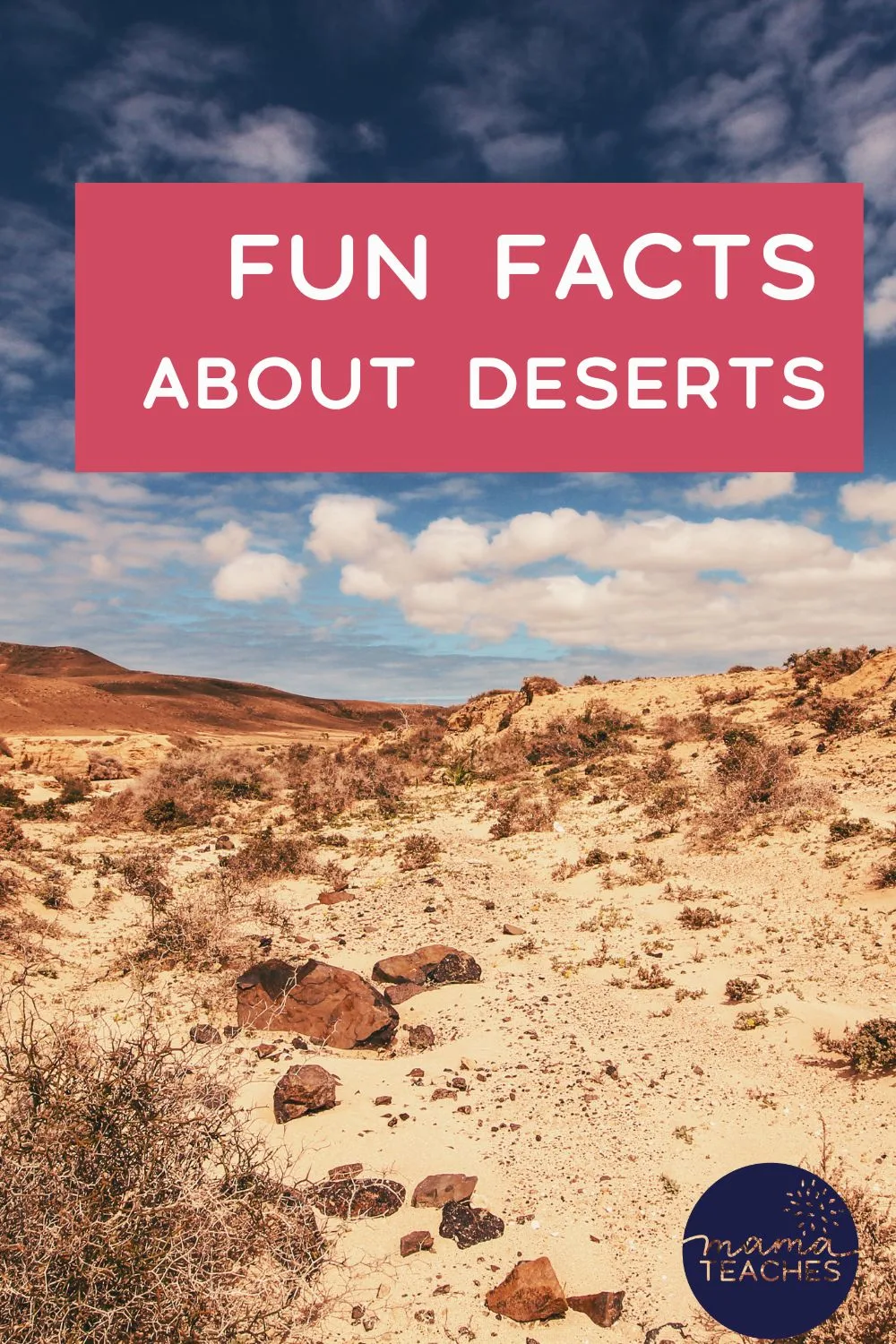
Facts About the Desert Biome
The desert is a weird and wonderful place.
The plants and animals who make their homes in the hot and cold deserts have interesting adaptations to survive life in this biome.
Learn more about the desert with these fun facts!
